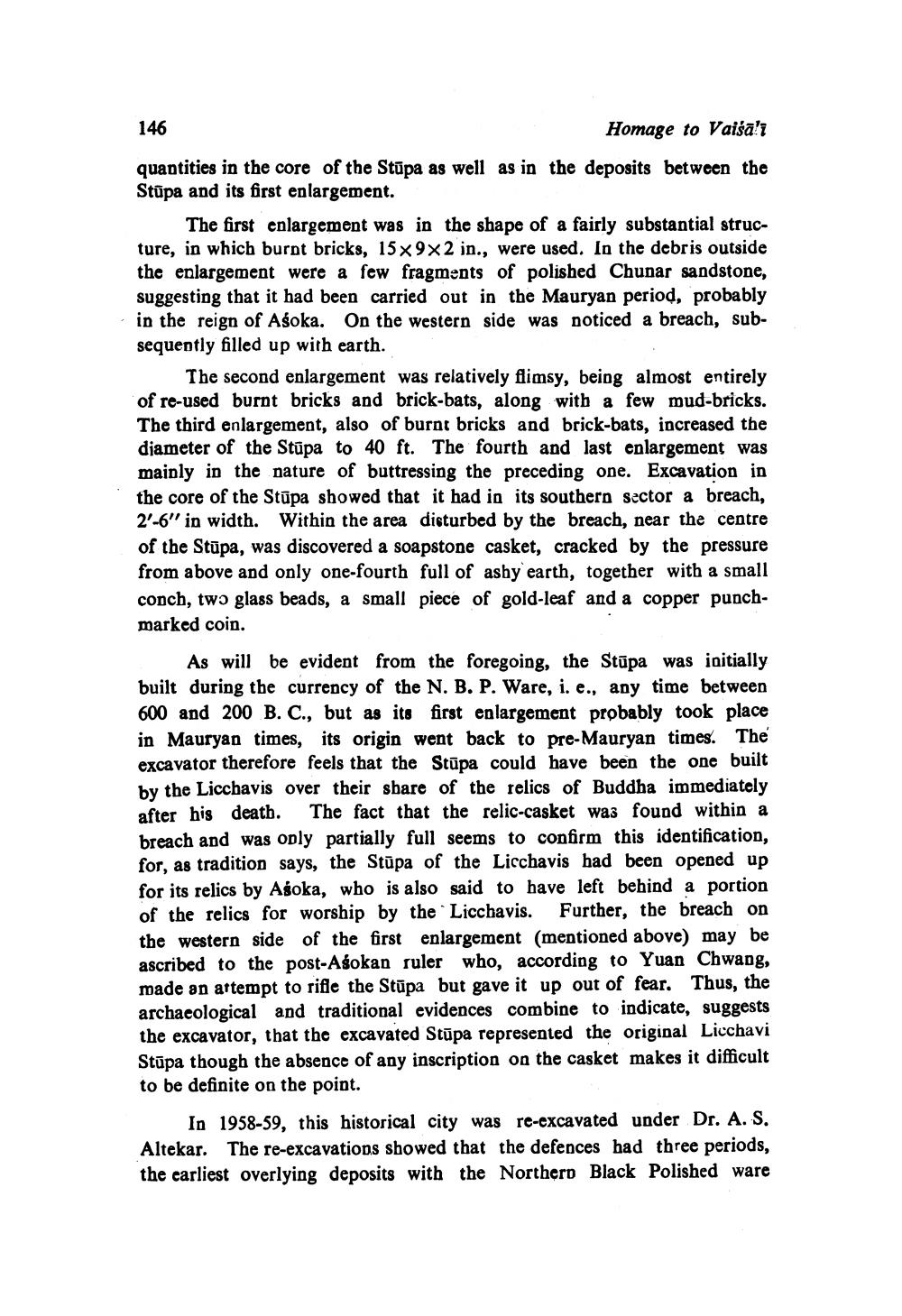________________ 146 Homage to Vaisa!i quantities in the core of the Stupa as well as in the deposits between the Stupa and its first enlargement. The first enlargement was in the shape of a fairly substantial structure, in which burnt bricks, 15 x 9x2 in., were used. In the debris outside the enlargement were a few fragments of polished Chunar sandstone, suggesting that it had been carried out in the Mauryan period, probably in the reign of Asoka. On the western side was noticed a breach, subsequently filled up with earth. The second enlargement was relatively flimsy, being almost entirely of re-used burnt bricks and brick-bats, along with a few mud-bricks. The third enlargement, also of burnt bricks and brick-bats, increased the diameter of the Stupa to 40 ft. The fourth and last enlargement was mainly in the nature of buttressing the preceding one. Excavation in the core of the Stupa showed that it had in its southern sector a breach, 2'-6" in width. Within the area disturbed by the breach, near the centre of the Stupa, was discovered a soapstone casket, cracked by the pressure from above and only one-fourth full of ashy earth, together with a small conch, two glass beads, a small piece of gold-leaf and a copper punchmarked coin. As will be evident from the foregoing, the Stupa was initially built during the currency of the N. B. P. Ware, i. e., any time between 600 and 200 B. C., but as its first enlargement probably took place in Mauryan times, its origin went back to pre-Mauryan times. The excavator therefore feels that the Stupa could have been the one built by the Licchavis over their sbare of the relics of Buddha immediately after his death. The fact that the relic-casket was found within a breach and was only partially full seems to confirm this identification, for, as tradition says, the Stupa of the Licchavis had been opened up for its relics by Agoka, who is also said to have left behind a portion of the relics for worship by the Licchavis. Further, the breach on the western side of the first enlargement (mentioned above) may be ascribed to the post-Agokan ruler who, according to Yuan Chwang, made an attempt to rifle the Stupa but gave it up out of fear. Thus, the archaeological and traditional evidences combine to indicate, suggests the excavator, that the excavated Stupa represented the original Licchavi Stupa though the absence of any inscription on the casket makes it difficult to be definite on the point. In 1958-59, this historical city was re-excavated under Dr. A. S. Altekar. The re-excavations showed that the defences had three periods, the earliest overlying deposits with the Northern Black Polished ware




